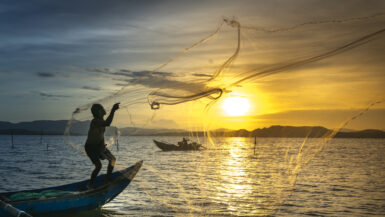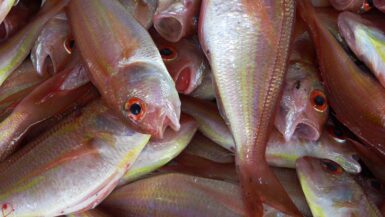Fishing for flathead catfish in rivers is a thrilling outdoor experience and a great way to spend the afternoon. Whether you’re a novice or a professional angler, there are some tips and tricks that can help increase your chances of catching this prized game fish. In this article, we will discuss the best techniques for fishing for flathead catfish in rivers. We will look at the bait, tackle, locations, and tips that experienced anglers swear by to ensure a successful outing. With a little bit of patience and the right approach, you can proudly display your catch and make memories that will last a lifetime.
Preparing for Flathead Catfish Fishing
Anglers who are looking to catch the flathead catfish found in rivers should make sure that they have the right gear ready to go beforehand. The main pieces of equipment include a fishing rod, reel, and a selection of hooks, lines, and lures. Experienced anglers recommend using a rod with a soft tip, as well as reels that have a good drag and are preferably baitcaster. Fishing lines should be of a test strength that matches the typical size of the flathead catfish in the river, usually between 6 – 20lb. Additionally, lures should be suited to the size and type of water, and the best choice depends on the individual situation.
Understanding the Habits of Flathead Catfish
Knowing the habits of the flathead catfish is essential to fishing for them successfully. This species of catfish tends to hang out in deeper, slower-moving parts of rivers, usually near the bottom or near structures like logs and rocks. During the warmer seasons, flathead catfish can also be found near the shore or shallower areas of the river. Being able to recognize the characteristic flathead catfish behavior is essential to finding the right spots in the river.
Using the Right Bait for Flathead Catfish Fishing
When bait fishing for flathead catfish, anglers should use fresh bait to maximize the chances of success. Shad, shiners, and bullheads are among the best options for the flathead catfish. These can be bought or caught easily, and cprfish.com recommends threading them onto the hooks to give them the best chance of attracting the catfish. For lures, anglers should use jigs and spinnerbaits, as well as crankbaits, spoons, and rattling lures.
Identifying Hot Spots for Flathead Catfish
When fishing for flathead catfish, it’s important to focus on areas of the river where catfish are most likely to be found. Look for deep, slow-moving sections, or areas near structures or logs. These are often popular hiding spots for the flathead catfish. Also, be on the lookout for signs of feeding activity, such as baitfish or other aquatic life. This can be an indicator that there are flathead catfish nearby.
Utilizing the Proper Techniques for Flathead Catfish Fishing
Once the right gear and bait have been found, it is important to understand the techniques used when fishing for flathead catfish. When bait fishing, make sure to use a slow and steady retrieve, as the catfish will not be attracted to fast movements. When trolling or lure fishing, bumping the lure or jig off the bottom can often be effective for catching flathead catfish. Lastly, be sure to stay quiet and aware when fishing, and keep an eye out for strikes from the catfish.
Location and Season for Flathead Catfish Fishing
Flathead catfish are an elusive species, making them a challenge to catch. When fishing for flathead catfish, you need to choose an ideal spot that caters to their habits. This means anglers should target areas with prime habitat for flathead catfish. Areas with woody cover, rocks, logs, and other debris will often attract flathead catfish. Along rivers, look for depths of at least 10 feet that have an abundance of these features.
Flathead Catfish Seasonal Patterns
When fishing rivers for flathead catfish, anglers should pay attention to seasonal patterns. Flathead catfish can be found in rivers year-round, but they tend to be more active during specific times of the year. During the spring and summer months, flathead catfish will typically be located in faster-moving water. Anglers should target the edges of these areas, as the current will carry food sources into the shallower waters. In the fall and winter months, flathead catfish will move to slow-moving areas and deeper waters. These catfish prefer still waters and use the deeper depths for protection from predators.
Timing Your Flathead Catfish Fishing Trip
Knowing the ideal spots and seasonal patterns is only half the battle when it comes to catching flathead catfish. Timing your trip is also important. Fishing for flathead catfish is best done during the days with a full moon. This is when the water is the warmest and the fish are the most active. Anglers should also pay attention to the weather conditions, as warm, sunny days are typically the best for catching flathead catfish. Windy conditions can also be favorable, as they help to attract baitfish and other prey fish into the area, which in turn draw in the flathead catfish.
Tackle for Flathead Catfish Fishing
Fishing for a flathead catfish in a river requires some knowledge of the habitat that species prefers. Look for areas with logs, rocks and cover where flatheads are likely to hide. Also, seek out areas of the river with slower currents and deeper waters, as flatheads will often lurk closer to the bottom. These catfish also prefer areas with a certain amount of oxygen for feeding, so look for areas with good water flow and oxygen.
Choose the Right Gear
In order to successfully catch a flathead catfish, it is important to choose the right fishing gear. A light to medium action rod and reel set-up is best for flathead fishing, along with a braided line. Heavier weights, such as sinkers or egg weights, can be used to help bait reach the bottom where flatheads are more likely to be. For bait, live or prepared bait such as worms, cut bait and chicken liver are all effective choices.
Using Jigging Techniques
For those looking to target a flathead catfish, jigging techniques can be very effective. Jigging involves using a weighted hook with bait and rapidly retrieving it, which often results in flatheads attacking. Jerking the rod and having different retrieves can help to draw an aggressive flathead and increase the chances of success.
Drifting a Bait Rig
Drifting a bait rig is another popular way to target flathead catfish on rivers. A bait rig typically consists of a circle hook tied onto the line with a weight, usually 15 to 20 feet away. Bait such as worms, chicken liver, and cut bait can be tied to the hook and as the bait moves with the current, flatheads will often take the bait. Be sure to pay attention to how the bait is moving with the current and adjust the weight accordingly.
Set the Hook Quickly
When a flathead catfish hits the bait, it is important to set the hook quickly. Flatheads have thick lips and a hard mouth, so they often require a firm and quick hook set to ensure the hook stays in place. If the hook is set too lightly or too slowly, the fish will often spit it out.
Using the Right Techniques
Knowing how to fish for flathead catfish on rivers is essential for a successful trip. Knowing how to locate where these catfish are hiding, what gear to choose, and the best techniques to use can increase the chances of bringing in a successful catch. With patience and practice, anglers can hone their skills and increase their chances of reeling in a big flathead catfish.
Baits for Flathead Catfish Fishing
Flathead catfish are big and powerful, so using live bait when you’re fishing for them is the best way to ensure a successful catch. Popular live baits for flathead catfish fishing include worms, shrimp, small fish, and crayfish. Live bait is especially effective in rivers and other bodies of water where flathead catfish are abundant, as it allows you to present the bait in the most natural way possible.
Floating Baits for Flathead Catfish Fishing
Floating baits such as jigs, crankbaits, and spinnerbaits are all great options when it comes to catching flathead catfish in rivers, as they mimic the characteristics of their natural prey. This type of bait is naturally attracted to flathead catfish, and can easily be cast far into the water, allowing you to cover more ground and increase your chances of catching a flathead.
Artificial Baits for Flathead Catfish Fishing
While live and floating baits are usually the go-to options when fishing for flathead catfish, artificial baits are also an effective option. These baits can be used in all types of water, from rivers to lakes and ponds, and come in various shapes, sizes, and colors. Artificial baits for flathead catfish can come in the form of lures, jigs, or even cut bait.
Dough Baits for Flathead Catfish Fishing
Another great option for catching flathead catfish is doughbaits. Doughbaits are great for late summer and fall months, when the water temperatures have cooled and the fish are sluggish. This type of bait is also a great choice if you’re fishing in a location where other types of bait won’t be successful. Doughbaits come in many different flavors, and can be made with a variety of fish oils, proteins, and minerals to attract catfish.
Benefits of Using Bait for Flathead Catfish Fishing
Using the right type of bait when fishing for flathead catfish can make a huge difference in the success of your outing. Using the right bait allows you to present your offering in the most natural way possible and increase your chances of catching a flathead catfish. Additionally, the right bait can also help to attract flathead catfish from deeper water and make it easier for you to land a successful catch.
Techniques for Flathead Catfish Fishing
Before you can begin fishing for flathead catfish in rivers, it’s important to understand their habits and behaviors. Flathead catfish are solitary and territorial fish that live in deep water. They are most active during the night, though they will feed during the day when there is little fishing pressure. They prefer areas with abundant structure and cover and can be found beneath logs, rocks, and other debris in the water. By understanding the habits and behavior of flathead catfish, you can set yourself up for more successful fishing trips.
Choose the Right Location
When fishing for flathead catfish, it’s essential to choose the right location. Look for areas with plenty of structure, like logs, boulders, and undercut banks. These are the types of places where flathead catfish like to hide. While you don’t necessarily have to fish these spots exclusively, it’s always a good idea to start your search here.
Use the Right Equipment
When fishing for flathead catfish in rivers, it’s important to use the right equipment. For most anglers, the best option is to use a spinning or bait-casting rod and reel setup. You’ll also need a variety of lures or baits, including worms, insects, minnows, and crayfish. If you’re bottom bouncing, you’ll need a long, heavy leader to help keep your bait from getting snagged. Finally, you’ll need a good net to help you safely bring the flathead catfish in.
Understand the Best Times to Fish
Flathead catfish are most active at night, so the best time to fish for them is in the evening and into the night. However, if you’re looking for some action during the day, you can still find flathead catfish in shallow water if the conditions are right. During the summer months, flathead catfish are especially active during the morning and evening, making these the best times to fish.
Use the Right Bait and Techniques
When fishing for flathead catfish, it’s important to use the right bait and techniques. Live bait is usually the most effective option, though you can also use artificial lures. When using live bait, try using worms, minnows, crayfish, or insects. If you opt for lures, crankbaits and jigs are your best bet.
When it comes to techniques, bottom bouncing is the most popular, as it’s an effective way to target flathead catfish. Trolling can also be effective, though you’ll need to move slowly in order to cover more ground and find the fish. Finally, casting is another great technique that allows you to cover a wide area and target specific spots.
Be Patient and Have Fun
Fishing for flathead catfish can be a fun and rewarding experience, but it’s important to be patient. Flathead catfish are fickle and can be difficult to catch. As long as you use the right bait, techniques, and equipment, you should be able to land plenty of these delicious fish. So be patient and have fun, and you’ll be sure to have a successful fishing trip.
Tips for Successful Flathead Catfish Fishing
Flathead catfish can be elusive, but with the right bait and technique, they can be enticed out of hiding. For flathead catfish, live baits, including worms, crayfish, frogs, and minnows, are highly attractive and effective. Choose a live bait that is native to your area or can be easily accessed in the water. If you’re fishing in deep water, use heavier baits, such as carp or shad, or attach a weight or sinker to the hook. If you’re fishing in warm weather, lighter baits, such as nightcrawlers, can be beneficial, as the scent of the bait will linger in the warmer waters for a longer time.
Target Flathead Catfish During Feeding Times
Flathead catfish hunt and feed at night, when the water is still and temperatures are cooler. During the day, they tend to rest in deep, dark holes or near underwater structures like logs or large rocks. To be more successful at catching flathead catfish, anglers should choose to fish during the early morning hours, when the water is still and the sun is yet to rise. If the moon is out, the flathead catfish’s activity will be especially high during night hours.
Choosing the Right Location
When targeting flathead catfish, pinpointing the right location is key. The best spots to target flathead catfish are typically near creek mouths, rock piles, cypress trees, and other underwater structures. These areas provide flathead catfish with the perfect hideout and enough current to bring the right baits and other prey their way. When fishing in rivers, make sure to pick spots that are far away from shore, as flathead catfish usually stay away from shallow waters.
Equipment and Techniques for Fishing Flathead Catfish
When fishing for flathead catfish, a medium-to-heavy action spinning rod and a quality line spooled with at least 20-pound test line are essential. Rigging a sinker or a 3-way swivel to the line can also be beneficial for fishing in deeper waters. When it comes to techniques, try using a method called “bobber-fishing”, which involves tying a bobber to the end of your line, so the bait is suspended at a certain depth. This is a great method for fishing in shallow waters or in areas with a slow current. When the bobber goes below the surface, know that a flathead catfish is nibbling on the line and it’s time to make your catch!
Tips on Possessing the Right Gear
Fishing for flathead catfish in rivers can be a rewarding experience. Anglers should ensure they have the right gear when embarking on their fishing adventure. It is important to use heavy-duty tackle, such as a 6-foot rod with a medium strength to catch flathead catfish. Tackle should include hooks, weights, and a decent bait, such as live worms, crayfish, and cut bait. Additionally, anglers should bring a stringer for safely transporting the flatheads. By using the right gear and following these techniques, anglers can have a great fishing experience and make the most of their river fishing for flathead catfish.





Leave a reply